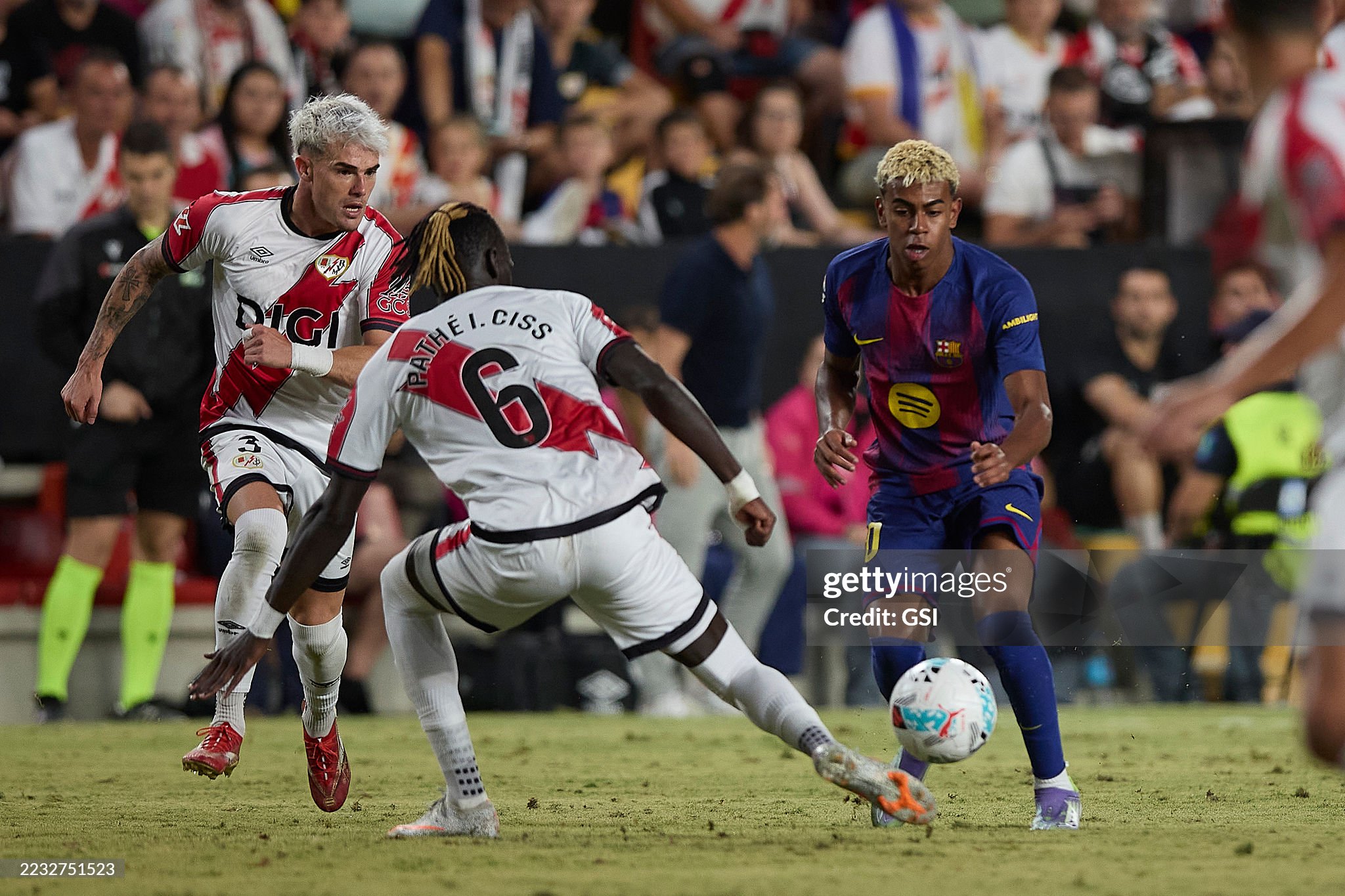One of the biggest controversies from last weekend’s clash between Rayo Vallecano and Barcelona did not come from the players on the pitch but from the technology designed to assist referees: the Video Assistant Referee, commonly known as VAR.
What should have been a tool to guarantee fairness and transparency ended up being the focus of post-match debate, as repeated malfunctions severely disrupted its use throughout the ninety minutes in Vallecas.
From the opening whistle, there were clear signs that something was wrong. At various points during the game, VAR could not be used at all, effectively leaving the on-field referee without technological support. In other moments, the system allowed for communication between the VOR room the central command post where VAR officials monitor the match and the referee, but crucially the referee himself was unable to see the images of controversial plays on the pitch-side monitor. At times the system seemed to recover, only to break down again shortly after. The stop-start functioning created confusion and frustration, but its most damaging impact came during the incident involving Lamine Yamal.
Midway through the game, the young Barcelona forward went down in the box under questionable circumstances. The referee awarded a penalty, which was converted into Barcelona’s only goal of the match. Normally, such a decision would have been subjected to a detailed VAR review, given the debate around whether contact was sufficient for a foul. But with the system down at the time, no review was possible. The incident quickly became the symbol of the evening’s technological chaos, sparking anger from Rayo Vallecano and debate across Spanish football. Many argued that the outcome of the game had been directly shaped by VAR’s failure to function properly.
In the days that followed, attention turned to Mediapro, the company responsible for managing the communication infrastructure between the VOR room and the referee on the field at Vallecas. The broadcaster and technology provider admitted the severity of the situation and launched an internal investigation to determine why VAR had failed so spectacularly in a high-profile La Liga match. Their findings have now been made public, shedding light on the technical shortcomings that brought the system down.
First, Mediapro discovered that the power supply allocated to their Mobile Unit inside the Vallecas stadium was insufficient to guarantee proper functioning. The circuit breaker of that power source lacked the required sensitivity, operating at 300mA, which was not adequate to handle the electrical consumption needed by the equipment inside the Mobile Unit. This misalignment meant that even under normal use, the system risked overloading, and during the match it repeatedly cut out.
Secondly, the investigation confirmed that the technical team had attempted to resolve the issue before and during the first half by exploring alternative power options available at the venue. However, none of these emergency solutions were able to provide a stable electrical supply. This explains the intermittent availability of VAR during the opening 45 minutes, with the system working only sporadically.
At halftime, Mediapro’s staff implemented a more decisive measure, connecting the Mobile Unit to an Uninterruptible Power Supply. This allowed the system to run with greater stability while the team worked to secure a proper 300mA adapter. From that point onwards, VAR was more stable, though the damage had already been done with the earlier penalty incident.
Finally, Mediapro stressed that the Mobile Unit itself was not at fault. Following the game, the equipment was subjected to exhaustive analysis and stress tests, none of which revealed any underlying hardware issues. The malfunction was attributed solely to the unsuitable power infrastructure provided at the stadium rather than to technical flaws within the VAR equipment.
The controversy has reignited the debate over VAR’s reliability and the infrastructure required to ensure it works flawlessly. For fans and clubs, the idea that such a high-stakes match could be influenced by something as basic as a faulty power connection is hard to accept. Critics argue that La Liga and its technology partners must guarantee a consistent standard across all stadiums to avoid repeating similar fiascos. Questions are also being asked about contingency planning: should there be backup systems or protocols to ensure that crucial decisions are not left unchecked due to technical glitches?
For Barcelona, the incident provided a lifeline, as their only goal came from a penalty that might have been overturned upon review. For Rayo Vallecano, it was a source of frustration, with many feeling that the match was unfairly influenced by technology that was supposed to protect sporting integrity. For Spanish football as a whole, it was an embarrassment that undermines confidence in VAR at a time when its use is already heavily scrutinized by fans, players, and pundits alike.
The Vallecas VAR failure will likely serve as a wake-up call. Mediapro’s report highlights the importance of proper infrastructure and raises the need for stricter checks before matches. With VAR now entrenched in football’s modern era, ensuring it functions correctly is no longer a luxury it is an absolute necessity to maintain the credibility of refereeing decisions in competitions as significant as La Liga.


